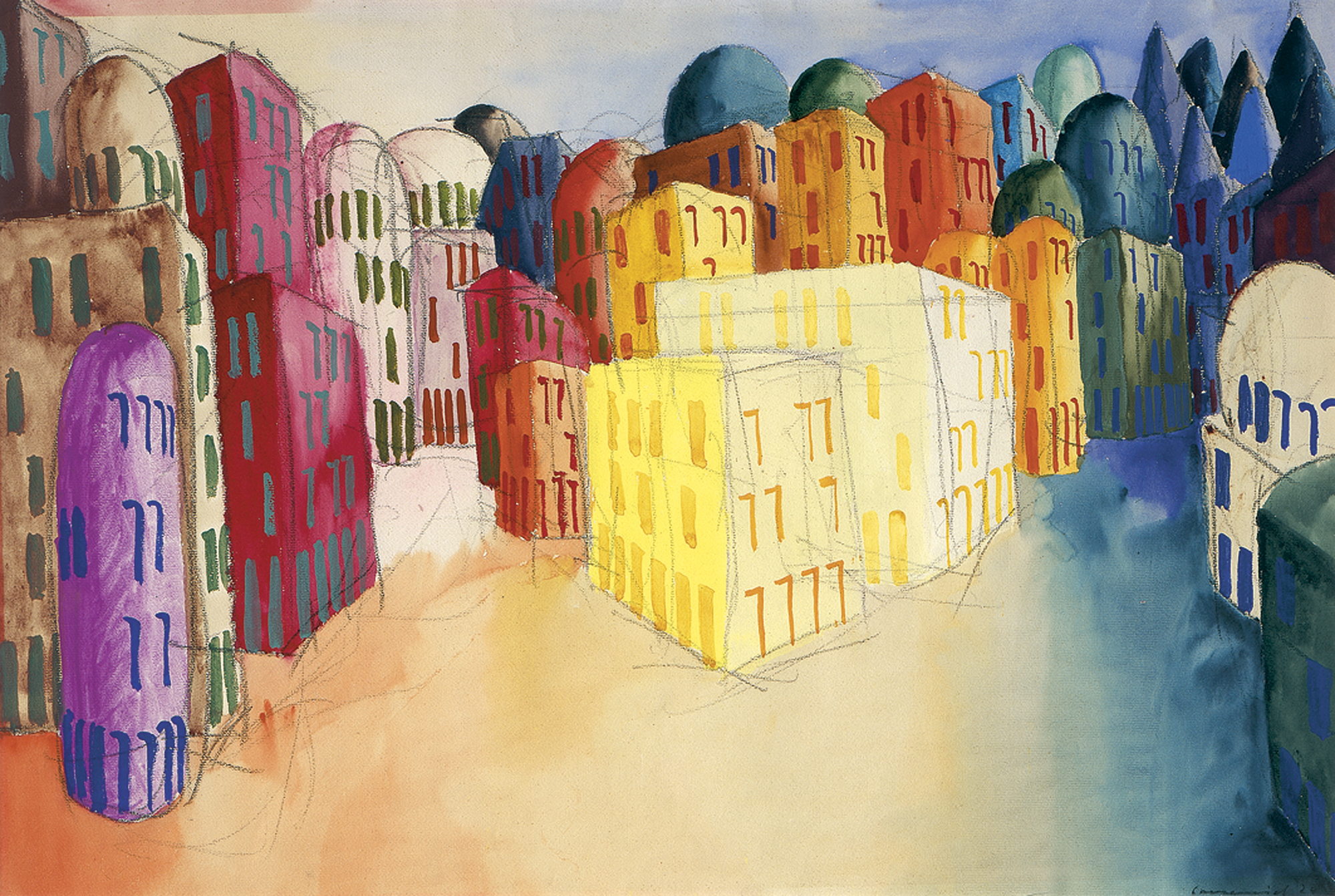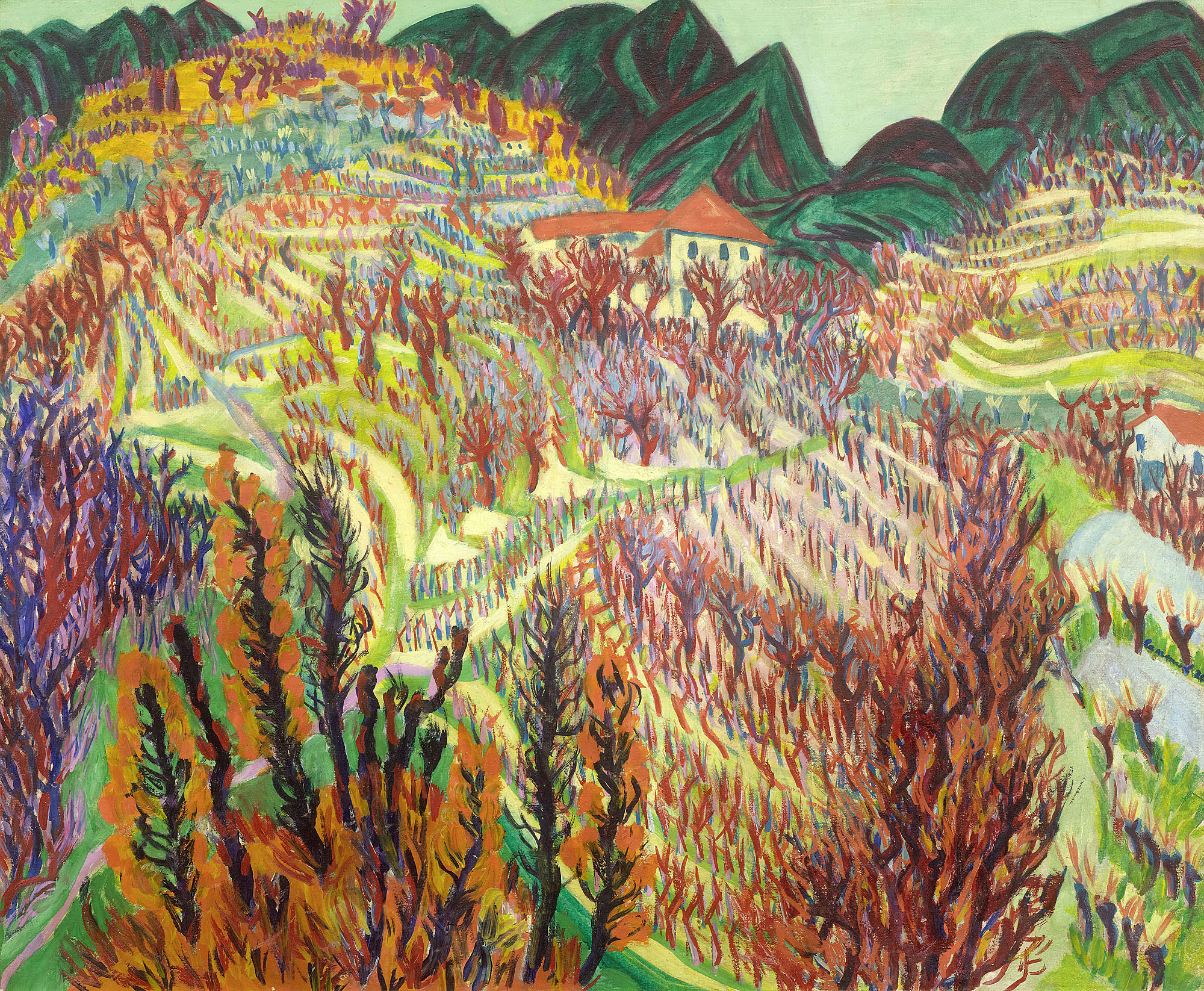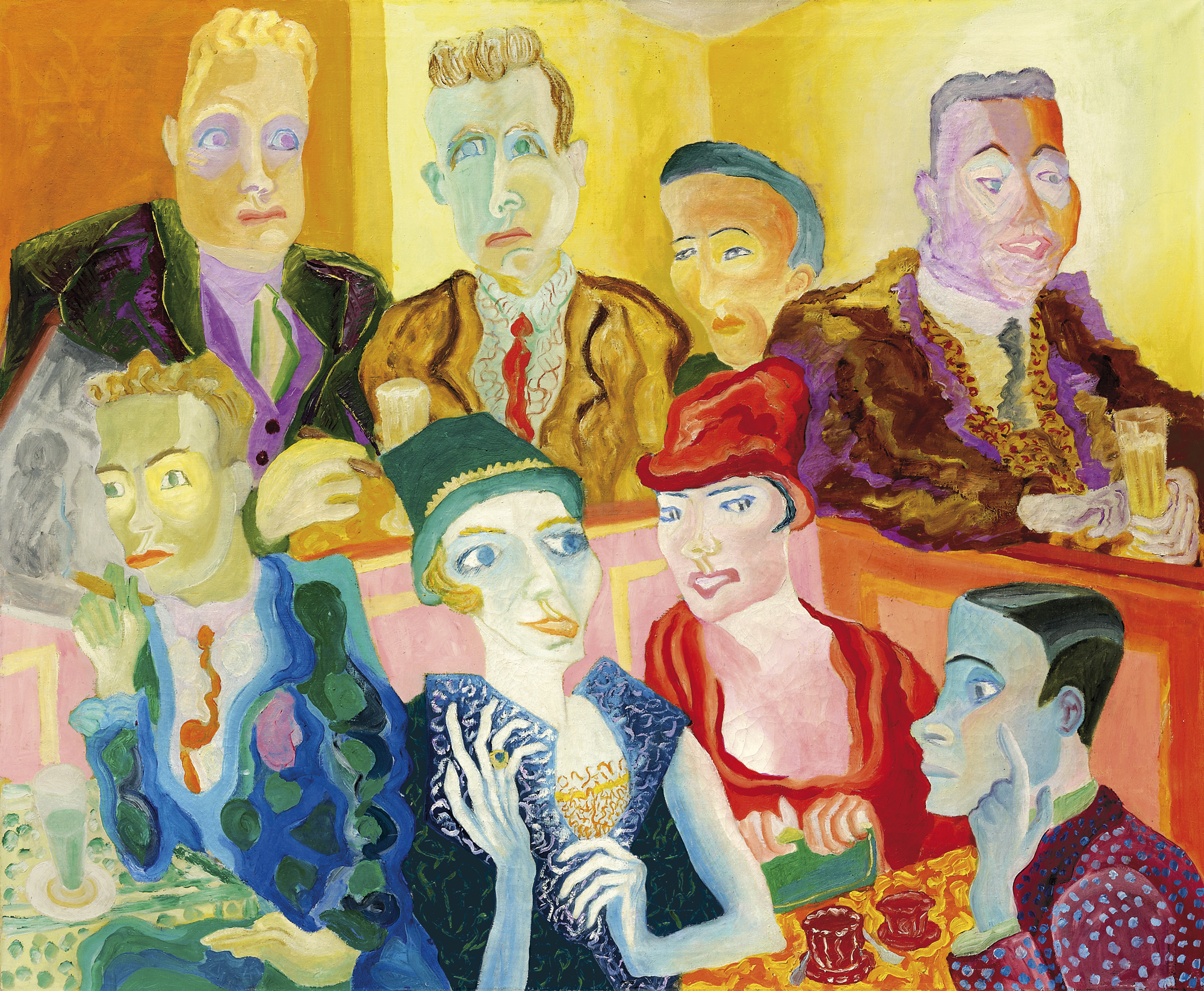Hallucinatory visions surreal acid colours, a lively and expressive brushstroke – Paul Camenisch’s painting stirs, upsets, and haunts. The artist himself is an exception in the Swiss artistic landscape. His daring is that singular, his work multifaceted and complex.
Following architecture studies at Zurich’s ETH under Karl Moser, and projects in Germany and at several architectural firms in Basel, he painted his first watercolours between 1921 and 1924, finding inspiration in imaginary constructions. During the same period, Camenisch stayed in Monte Verità in Ascona, a place that had been bringing together since the turn of the century a community of thinkers and artists around experiments in new ways of living that were thought to be closer to nature.
Settled for a time at Villa Loverciana in Castel San Pietro, he cofounded in Basel in late 1924, with Albert Müller and Hermann Scherer, the Rot-Blau Group, whose artistic concerns and experimentations were to exert lasting influence on the history of Swiss Expressionism. His art distilled the influence of Ernst Ludwig Kirchner, with whom he stayed for three months in Davos in 1926. With the death of his two Rot-Blau cofounders, Camenisch refounded the group in 1928 with Hans Stocker, Coghuf (Ernst Stocker), Otto Staiger, Charles Hindenlang, and Max Sulzbachner. In 1933 Gruppe 33, an association of antifacist artists, was born. Camenisch gradually turned to painting more lyrical scenes that display a direct realism while conserving the colours and liveliness of his early work. His art, however, remained sufficiently provocative and subversive to figure in the sinisterly famous Nazi exhibition of 1937 against supposedly degenerate art, Entartete Kunst, at the Haus der Kunst in Munich.
While his painting later became more contained, served by dry, chalky colours, it was strongly imbued with social concerns. Politically committed, Camenisch became the president of the Swiss-Soviet Union Society in 1952 and travelled around the USSR the following year, which led to his ouster from Gruppe 33. His radical positions now isolated him both artistically and personally, and it was only in the 1970s that he would be rehabilitated as an artist removed from all political ideology. A retrospective was devoted to him at Basel’s Kunsthalle in 1970, and exhibitions at the Bünder Kunstmuseum in Chur and the Kunstmuseum in Olten (1985) finally made it possible to highlight his work and rightly celebrate him as one of the major figures of Swiss Expressionism.
Following architecture studies at Zurich’s ETH under Karl Moser, and projects in Germany and at several architectural firms in Basel, he painted his first watercolours between 1921 and 1924, finding inspiration in imaginary constructions. During the same period, Camenisch stayed in Monte Verità in Ascona, a place that had been bringing together since the turn of the century a community of thinkers and artists around experiments in new ways of living that were thought to be closer to nature.
Settled for a time at Villa Loverciana in Castel San Pietro, he cofounded in Basel in late 1924, with Albert Müller and Hermann Scherer, the Rot-Blau Group, whose artistic concerns and experimentations were to exert lasting influence on the history of Swiss Expressionism. His art distilled the influence of Ernst Ludwig Kirchner, with whom he stayed for three months in Davos in 1926. With the death of his two Rot-Blau cofounders, Camenisch refounded the group in 1928 with Hans Stocker, Coghuf (Ernst Stocker), Otto Staiger, Charles Hindenlang, and Max Sulzbachner. In 1933 Gruppe 33, an association of antifacist artists, was born. Camenisch gradually turned to painting more lyrical scenes that display a direct realism while conserving the colours and liveliness of his early work. His art, however, remained sufficiently provocative and subversive to figure in the sinisterly famous Nazi exhibition of 1937 against supposedly degenerate art, Entartete Kunst, at the Haus der Kunst in Munich.
While his painting later became more contained, served by dry, chalky colours, it was strongly imbued with social concerns. Politically committed, Camenisch became the president of the Swiss-Soviet Union Society in 1952 and travelled around the USSR the following year, which led to his ouster from Gruppe 33. His radical positions now isolated him both artistically and personally, and it was only in the 1970s that he would be rehabilitated as an artist removed from all political ideology. A retrospective was devoted to him at Basel’s Kunsthalle in 1970, and exhibitions at the Bünder Kunstmuseum in Chur and the Kunstmuseum in Olten (1985) finally made it possible to highlight his work and rightly celebrate him as one of the major figures of Swiss Expressionism.


